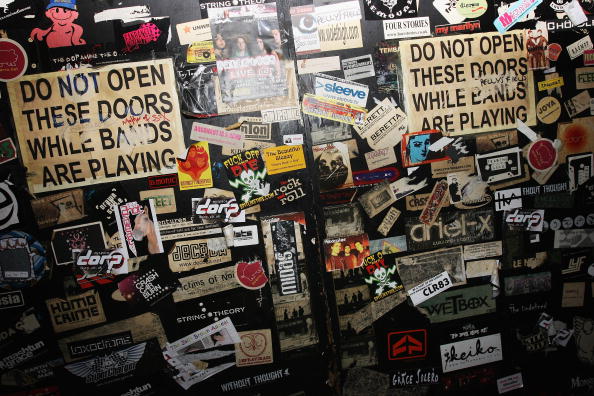Inside the fight to save London’s grassroots music scene and keep cultural institutions

Until landowners recognise the value in keeping cultural projects alive, regeneration projects will leave them by the wayside, writes Mark Davyd
Whose city is this?
That may seem like an existential question but it is increasingly at the forefront of a battle between communities, developers, planners, and local authorities. The question of who lives in a place – and what they want that place to be like, what they want access to, what services they need – is front and centre of a debate that has been swirling around culture in London for over 20 years. And if culture is the cutting edge of this discussion about who and what our cities are for, live music sits at the very tip of that blade.
Between 2007 and 2015, London lost over a third of its grassroots music venues (GMVs). The situation was so serious to London’s character that the then Mayor of London Boris Johnson commissioned a report into it. The recommendations from that report, what could be done to prevent it, were then accepted, and acted upon, by incoming Mayor Sadiq Khan in 2016.
I was part of the team that created that report.
We identified twenty-two different factors that might cause a music venue to close, and no individual venue exhibited one single factor; it was always the case that each closed venue had faced multiple challenges eventually resulting in an ability to continue.
But every venue did share a very specific characteristic: almost all of the UK’s grassroots music venue operators don’t own their building. In London, not one of the venues that closed was owned by the venue operator. Every single one of the venues operated under a tenancy agreement with a commercial landlord. This ownership model isn’t reflected in any other part of our UK cultural infrastructure, nor anywhere else in the world.
The impact this has on the sustainability and economic viability of these essential cultural spaces cannot be overstated. Venue operators and landlords have different motivations. Private landlords, understandably, want to maximise the return on their investment. Venue operators want to plan for the future, invest in sustainability, accessibility, diversity, artists, and the venue itself.
This disconnect in intent for our cultural spaces underlies almost every other challenge that grassroots music venues have faced during the last twenty years: gentrification, noise complaints, under investment, poor economic models, and an inability to plan for the future. One of the most recent examples is of Vault Festival, a celebration of grassroots comedy and cabaret which lost its home in Waterloo because the owners wanted to pursue different kinds of tenants.
In response to the 2015 report, Music Venue Trust (MVT) began exploring how to change this ownership model. We wanted to create something that provided better security for venue operators, and more protection for culture in our communities. We wanted to rebalance the debate about the future of London so developers and planners are compelled to negotiate and work with a landowner who wanted to ensure culture survives regeneration projects.
We wanted cities to accommodate and permit culture as they grow and develop, not just push it aside. In 2019 we were ready to launch our ownership project but the pandemic blew those plans away. MVT fought a long and hard campaign to ensure that the closure of music venues was not one of the unfortunate outcomes of the pandemic, and we were hugely successful in that aim. But we always knew that eventually the subject of ownership would return to the top of our list of things that need to change.
Thinking about who should own the freeholds of these spaces, we came up with a clear way forward. The best people to own them would be the communities that use them, value them, rely on them. Community ownership is not new, it is successfully used to save local post offices, pubs, shops. And music is one of the biggest cultural communities: it’s local music fans that prop up the bar on a Tuesday night; artists who need somewhere to play their first gig; a national live music community understands that a healthy touring circuit is the reason that Britain leads the world in music and musicians. A global industry that has enjoyed the huge success that starts when a musician first puts their foot on their first stage. The opportunity was there to bring all these people on board, to take the Community Ownership model and supersize it.
In May 2022 we launched the UK’s most ambitious community ownership scheme so far, Own Our Venues. It was a plan to purchase nine grassroots music venues, take them into a benevolent ownership model, and create secure tenancies for venue operators that are tied to one specific clause in their occupancy agreement: they must provide culture for their communities. Sony, Warners and Amazon have all provided financial backing.
It was a very difficult nine months to launch a project. Shortly after we announced rising inflation and energy costs piled significant pressure on it. People were hesitant to invest in an audacious and untested scheme when they were suddenly unsure about the most certain of projects. But by the end of March, we had raised enough, and as I write this, surveyors are being instructed.
It’s a huge breakthrough for grassroots music venues, but it’s much more than that. It’s an example of how to design a future for our towns and cities which gives us all a vested interest in it. We could have festival sites co-owned by festival goers, or sportsgrounders owned by Sunday football players.
In the question of whose city is this, who does it belong to, what is it for, we have to make sure we create a new answer: It belongs to all of us. And we should own it.